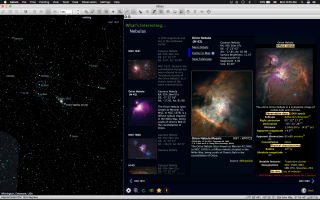

It is packaged for Debian, so other distros may carry it, too. But with a computer at hand, you can put away then pencil and paper, and calculate your spotting information on-the-fly.Īt the simple-end of the spectrum you find CLI tools like aa (for Astronomical Almanac), a GPLv2 app that calculates positions and velocities for planetary bodies and stars, with a simple, menu-driven interface. Astronomers use tables called ephemerides to keep track of these ground-observer positions. Fortunately, just about everything from the local planets and asteroids out to deep sky objects is well-cataloged what you need is a way to translate the celestial position of an object into the coordinates for your position on the ground, at the point in time you intend to be looking up. If you don’t know where to look, the chances are you won’t see anything interesting. Step one is figuring out where to point your telescope. Whether you need to precisely drive a large telescope for scientific purposes or just want to create decent-looking astrophotography, chances are there is a project out there already suited for the task.

#Best astronomy software linux professional#
But it is a literal truth, too, as Linux and open source software power scores of professional and amateur astronomy projects. Considering Linux’s foothold in everything from embedded devices to supercomputers, describing the project’s growth as astronomical is no exaggeration.


 0 kommentar(er)
0 kommentar(er)
